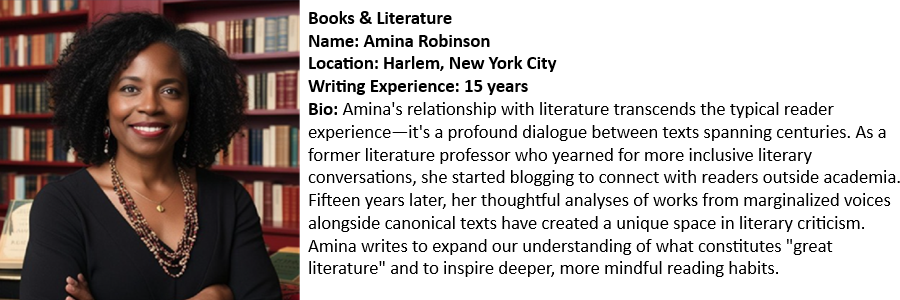Historical Foundations: The Birth of Romance Literature
The roots of romance literature can be traced back to the 18th and 19th centuries when authors began to explore the intricate dynamics of love and courtship within societal frameworks. One of the most prominent figures in early romance novels is Jane Austen, whose works have significantly shaped the genre. Her narratives encapsulated the social class dynamics of her time, illustrating the restrictions imposed by societal expectations on romantic relationships.
Austen’s novels often depict the struggles of young women navigating the complexities of courtship amid class distinctions. Her characters frequently face societal pressures that dictate their choices in love and marriage, reflecting the pervasive norms of gender roles during this period. For instance, Austen’s protagonists typically find themselves in challenging situations where their emotional desires clash with the expectations of their families and society at large. Such themes resonate throughout her works, creating a rich tapestry of romance characterized by wit, irony, and keen social observation.
This era also introduced a notable emphasis on the romantic ideals of love, an essential theme that continues to influence modern romance narratives. Love was portrayed not merely as a spontaneous feeling but as a social contract entwined with economic stability and family honor. This perspective often led to critical commentary on marriage as a means of social advancement rather than just a personal union, highlighting the complex interplay of affection, duty, and social propriety.
Austen’s impact on the genre is profound, with her unique style and exploration of relationships paving the way for future romance writers. By intertwining her characters’ personal journeys with broader societal issues, she set a precedent for romance literature that respects both individual desires and social constraints. This delicate balance remains a hallmark of the genre, continuously evolving yet firmly rooted in the foundational work laid by early authors like Austen.
The Evolution of Themes and Characters: Changing Social Norms
The evolution of romance novels reflects significant changes in social attitudes towards love and relationships throughout history. In the early works of authors like Jane Austen, themes often centered on courtship, social class disparity, and the challenges of marriage within a rigid societal structure. The focus was primarily on heterosexual pairs, and the narratives typically emphasized moral lessons alongside romantic entanglements. As societal norms began to shift in the 20th century, the portrayal of romantic relationships in literature also underwent considerable transformation.
The mid-20th century marked a considerable turning point, as the rise of feminist themes began to infiltrate romance novels. Authors started to explore women’s roles within relationships and questioned the traditional dynamics that dictated their worth and autonomy. This era, coinciding with the sexual revolution, laid the groundwork for more liberated expressions of love and sexuality. Romance narratives began to incorporate themes of sexual agency and empowerment, reflecting the evolving expectations of women both in society and within romantic partnerships.
In recent decades, as cultural attitudes have continued to broaden, modern romance novels have increasingly embraced diverse characters and intricate plotlines. Authors are now depicting complex relationships that transcend traditional norms. LGBTQ+ themes and characters are becoming more prevalent, allowing stories to explore a variety of sexual orientations and identities. Additionally, romance literature is engaging with multicultural backgrounds, offering a richer tapestry of experiences in love. These modern narratives challenge and expand upon the once simplistic archetypes of romance, inviting readers to consider deeper psychological and sociocultural dimensions of love.
This ongoing evolution in romance literature illustrates the genre’s ability to adapt to contemporary values and societal shifts. By reflecting the changing landscape of relationships, contemporary romance novels not only entertain but also provoke thought and discussion about modern love and its infinite permutations.
The Rise of Subgenres: Expanding the Definition of Romance
Over the past few decades, the romance genre has undergone a significant transformation, leading to the emergence of various subgenres that enrich the overall literary landscape. This evolution reflects the diverse preferences of readers and the multifaceted nature of love itself. Among the most popular subgenres are historical romance, contemporary romance, paranormal romance, and romantic suspense, each offering unique narratives and themes that cater to different audience tastes.
Historical romance remains a beloved subgenre, transporting readers to different eras where courtship and cultural norms shape relationships. This genre allows authors to explore the complexities of love against the backdrop of historical events, creating vivid settings that enhance the romantic tension and drama. For readers who prefer modern settings, contemporary romance presents relatable characters navigating love in today’s society, often tackling issues such as career ambitions and societal expectations.
In contrast, paranormal romance introduces elements of fantasy and the supernatural, such as vampires, werewolves, and other mystical beings. This subgenre captivates readers by blending romance with speculative elements, resulting in imaginative narratives that challenge the confines of reality. Additionally, romantic suspense amalgamates romance with thriller elements, combining love stories with mystery and tension. This captivating mixture keeps readers on the edge of their seats, eager to uncover both the romantic and suspenseful twists of the plot.
The rise of diverse subgenres within the romance category has significantly contributed to more inclusive representation in literature. By accommodating a variety of voices and perspectives, authors can create narratives that resonate with a broader audience. From LGBTQ+ stories to those reflecting varied cultural backgrounds, the romance genre has grown to embrace multiplicity, making it a rich field for exploration and connection. Ultimately, the expansion of subgenres has ensured that romance literature continues to evolve alongside societal changes and reader preferences.
Cultural Impact and the Future of Romance Novels
Romance novels have carved a distinct niche within the publishing industry, significantly impacting both commercial success and popular culture. Since the days of Jane Austen, who deftly encapsulated human emotions and societal constraints, this genre has evolved into one of the most lucrative segments of literature. The rise of self-publishing platforms and e-books has revolutionized the accessibility of romance literature, allowing for a broader range of voices and stories to emerge. Authors previously constrained by traditional publishing methods now find digital avenues to reach diverse audiences. This democratization has enabled both established and new writers to explore various themes, ensuring that the genre remains vibrant and relevant.
Leading trends in romance literature reflect an increasing focus on inclusivity and representation. Contemporary romance novels frequently tackle issues such as love across cultural boundaries, LGBTQ+ relationships, and the complexities of modern identity. These themes resonate with wider societal dialogues, allowing readers to see their own experiences reflected in narratives that were once largely homogeneous. The evolution of characters and narratives further mirrors changing social norms, where female empowerment and diversity of voice take center stage rather than merely conventional plotlines of love and longing.
Looking ahead, the future trajectory of romance novels appears promising, with digital platforms continuing to play a pivotal role. Streamed content adaptations of popular romances will likely encourage a new generation of readers to engage with these stories in various formats. As the genre adapts to contemporary concerns, such as mental health, social justice, and global awareness, it will further establish itself as an essential part of cultural discourse. Ultimately, romance novels will not only address themes of love and identity but will also reflect the evolving dynamics of relationships, ensuring their relevance in both the literary world and society at large.


